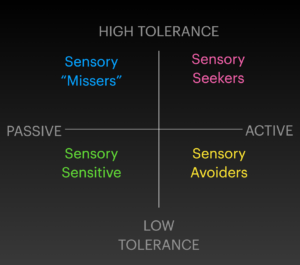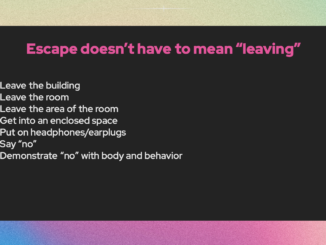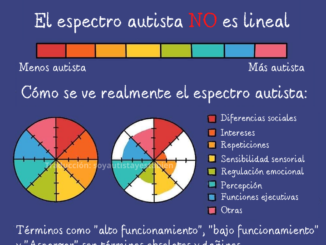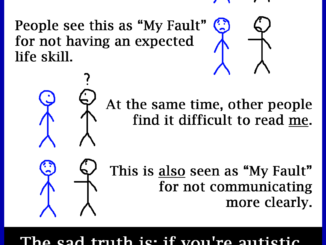“Sensory” is one of those buzzwords these days in parenting groups, on Pinterest, and in relation to different diagnoses. I’ve seen people use it to mean pretty much everything. When I talk about sensory processing, I am not talking about kids playing with rice or shaving cream in a bin. 😊
There are a few different ways of conceptualizing sensory processing, but the way that I’m familiar with and is one of the most popular is Winnie Dunn’s “four-quadrant” model.

In an attempt to nutshell this, the concept is that there are two axes (as pictured). One axis runs from low tolerance to high tolerance for sensory input. The other runs from passive to active in terms of how someone will respond to that sensory input. That leaves you with four quadrants, which describe literally everybody — not just people with sensory processing difficulties. In the way that a scale like introversion/extraversion can measure everybody (some are high, some low, some somewhere in the middle), this scale can describe everybody.
Someone who has a high tolerance for sensory input, and actively moves toward that level of comfort, is sensory-seeking.
Someone who has a low tolerance for sensory input, and actively moves toward their level of comfort, is sensory avoiding.
Someone who has a low tolerance for sensory input, but does not behaviorally respond to it, is sensory sensitive.
Someone who has a high tolerance for sensory input, and does not behaviorally respond to it, is low registration (but I call it “sensory missing”, because that fits the pattern better).
It gets more complicated when you factor in the different types of senses: touch, sight, hearing, smell/taste (usually rolled into one for these purposes), vestibular (inner ear sense of uprightness/dizziness/movement), proprioception (inner body sense of where you are in space), interoception (ability to feel and interpret inner body signals including hunger, thirst, toileting, etc). This is because people could have a low tolerance for auditory input but a high tolerance for visual input, for example. People are not necessarily always grouped into one category, and the extremes of the categories are usually where there is some kind of associated dysfunction.
This overlaps with autism (and, more broadly, neurodivergence) because sensory processing differences are arguably a ubiquitous part of autistic people’s experience of the world. Sensory processing is one of the big categories in which autism (almost unanimously) causes difference.
The correlation doesn’t go in the opposite order; having sensory processing difficulties doesn’t automatically imply autism.
I suspected for a long time that I have sensory processing difficulties — as soon as I had language to begin describing what was going on inside my body. I’ve scored myself on assessment tests in the past, but all the assessments I had access to were designed for children, so I was guessing/remembering what I thought might have been true when I was a kid. As a therapist, I was able to use an adult assessment (not something freely available online, unfortunately) to confirm it for myself.
There is some debate about whether sensory processing disorder is, in and of itself, a distinct disorder. It is not its own classification in the DSM-5, for example. Some people argue that it should be. Others argue that SPD is always associated with another neurodivergence, such as autism, ADHD, etc. The amount of overlap between SPD and neurodiversity seems powerful enough to me to tentatively lean towards the latter, but this isn’t an area of research in which there is certainty to be had just yet.



